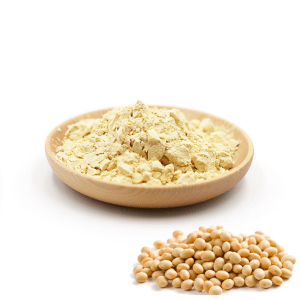
# Soy Fiber: A Sustainable and Nutritious Dietary Choice
## Introduction to Soy Fiber
Soy fiber, derived from the soybean plant, has gained significant attention in recent years as a sustainable and nutritious dietary option. As consumers become more health-conscious and environmentally aware, soy fiber presents itself as an excellent alternative to traditional dietary fibers.
## Nutritional Benefits of Soy Fiber
### Rich in Dietary Fiber
Soy fiber is an excellent source of both soluble and insoluble fiber. The soluble fiber helps regulate blood sugar levels and lower cholesterol, while the insoluble fiber promotes digestive health and regular bowel movements.
### High Protein Content
Unlike many other fiber sources, soy fiber contains a considerable amount of plant-based protein, making it particularly valuable for vegetarians and vegans. This combination of fiber and protein contributes to a feeling of fullness, which can aid in weight management.
### Low in Calories and Fat
Soy fiber is naturally low in calories and fat, making it an ideal addition to weight-conscious diets. Its high fiber content helps slow digestion, preventing sudden spikes in blood sugar levels.
## Environmental Advantages
### Sustainable Crop
Soybeans are a highly sustainable crop that requires less water and land compared to many animal-based protein sources. They also enrich the soil with nitrogen, reducing the need for synthetic fertilizers.
### Reduced Carbon Footprint
The production of soy fiber generates significantly lower greenhouse gas emissions compared to animal-based protein sources. Choosing soy fiber over animal products can contribute to reducing one’s carbon footprint.
## Culinary Uses of Soy Fiber
### Versatile Ingredient
Soy fiber can be incorporated into various dishes, from baked goods to meat alternatives. It absorbs flavors well and can be used to enhance the texture of many recipes.
### Meat Substitute
Due to its fibrous texture, soy fiber is commonly used in vegetarian and vegan meat alternatives. It provides a satisfying mouthfeel similar to animal protein while offering superior nutritional benefits.
## Potential Health Benefits
### Heart Health
Regular consumption of soy fiber has been associated with improved cardiovascular health, including reduced LDL cholesterol levels and lower blood pressure.
### Digestive Health
The high fiber content supports a healthy gut microbiome, which is essential for overall health and immune function.
### Blood Sugar Regulation
Soy fiber’s ability to slow carbohydrate absorption makes it beneficial for individuals managing diabetes or insulin resistance.
## Incorporating Soy Fiber into Your Diet
### Gradual Introduction
When adding soy fiber to your diet, start with small amounts and gradually increase to allow your digestive system to adjust.
Keyword: Soy Fiber
### Diverse Applications
Experiment with soy fiber in various forms – as an additive to smoothies, a meat extender, or a baking ingredient to increase the fiber content of your favorite recipes.
## Conclusion
Soy fiber represents a smart choice for health-conscious consumers looking to improve their nutrition while making environmentally responsible decisions. Its combination of health benefits, culinary versatility, and sustainability make it a valuable addition to modern diets. As research continues to uncover more advantages of plant-based fibers, soy fiber is poised to play an increasingly important role in global nutrition.
Comments are closed